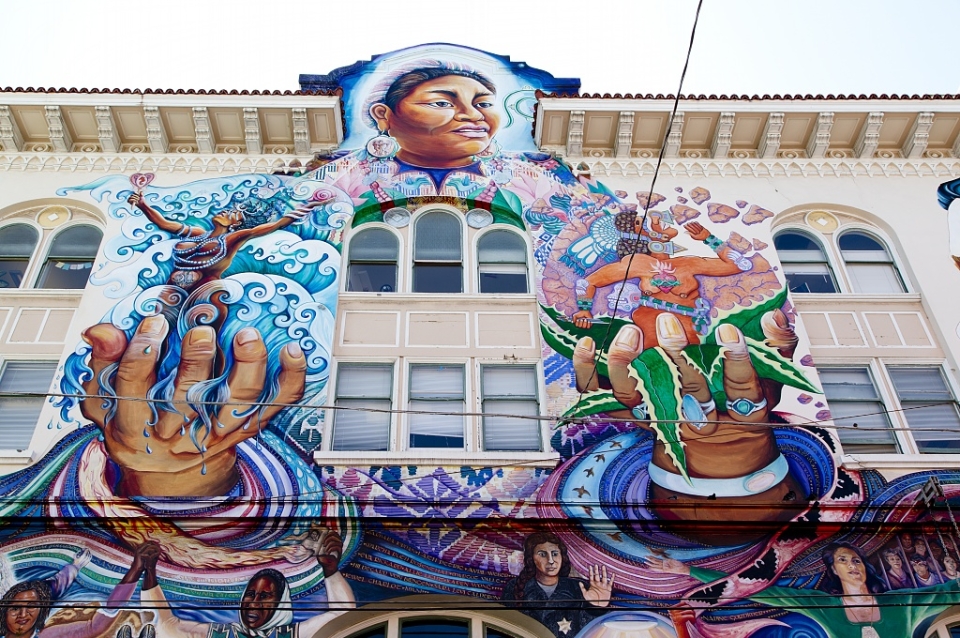December 11, 2019
Excerpt: Change Over Time on LGBTQ Heritage

Photo Carol M. Highsmith, Library of Congress, LC-DIGhighsm-21891, http://www.loc.gov/pictures/item/2013632351/
Stuart Weitzman School of Design
102 Meyerson Hall
210 South 34th Street
Philadelphia, PA 19104

Photo Carol M. Highsmith, Library of Congress, LC-DIGhighsm-21891, http://www.loc.gov/pictures/item/2013632351/
Michael Grant
mrgrant@design.upenn.edu
215.898.2539
Change Over Time is a semiannual journal of the history, theory, and praxis of conservation and the built environment, based at the Weitzman School and edited by Frank Matero, professor and chair of historic preservation, and Managing Editor Kecia L. Fong (MSHP’99). To mark the 50th anniversary of the Stonewall riots that helped jumpstart the gay-rights movement in the United States, Change Over Time published an issue dedicated to LGBTQ heritage. The following is an excerpt from an article in that issue, titled “Beyond the Bar: Types of Properties Related to LGBTQ History.” In the article, public historian Susan Ferentinos presents a way of “categorizing the LGBTQ historical landscape,” as she writes in the introduction. This excerpt is taken from a section titled “Sites of Support and Social Life,” with other sections focusing on sites of sites of protest and political organizing, LGBTQ businesses and organizations, sites of spirituality, sites of persecution and violence, sites of separatism, and sites of art and architecture. The entire article can be accessed through Project Muse.
Sites of Support and Social Life
While leisure-time activities are fundamental to the formation of any subculture, such activities are even more integral to LGBTQ communities. Because most people are not born into LGBTQ subcultures, many of the traditional means of acculturation—families, churches, schools—have less importance within LGBTQ communities, while sites of adult-oriented leisure have more importance.
The category of support and social life includes the traditional “gay bar,” which for many is the quintessential representation of distinctly queer space. Indisputably, bars have historically played a central role in allowing LGBTQ individuals a place to meet each other and build community, but there are dangers in assuming it is the only—or even the primary—type of site related to LGBTQ culture and history. To begin with, an overemphasis on bars runs the risk of diminishing the importance of preserving the LGBTQ past, since this type of resource tends to be relatively short-lived and is not generally acknowledged as particularly significant to history.
More importantly, though, a reification of the gay bar as representative of queer space privileges the experience of white men, who were the demographic most likely to engage in bar culture, over the experiences of others who fall under the LGBTQ umbrella. Throughout much of US history, women in public by themselves after dark were assumed to be of questionable character. As a result, night-time socializing in public places never became as popular among lesbians and bisexual women—particularly those of the middle class—as it did for gay and bisexual men. Instead, women relied on informal social networks, such as potlucks and private parties, to socialize and meet new people.
In a similar vein, LGBTQ people of color have not always been welcomed in bars patronized by whites (gay as well as straight), and as a result, these communities often developed different forms of socializing. As one example, historian Genny Beemyn argues that segregation of bars in Washington, DC, led LGBTQ African Americans to develop a culture of socializing at private house parties as well as making use of certain times of the week to gather together at otherwise straight social venues that catered to African American customers.
When considering sites of LGBTQ support and socializing, thinking beyond bars will help ensure that the nuances of queer experiences are represented in the preservation landscape. Other types of social spaces include LGBTQ resort towns, such as Rehoboth Beach, Delaware, and Provincetown, Massachusetts; clubs, such as the early twentieth-century heterodoxy club and late twentieth-century Black and White Men Together; sports organizations, such as women’s softball leagues; and community centers.
The San Francisco Women’s Building (TWB), added to the National Register in 2018, provides a fascinating case study of the varied ways communities create spaces of support. Founded in 1978, TWB sought to house and foster groups that were “supporting and celebrating women across time and around the world.” Representing a multitude of ethnic and sexual identities, the organizers created an environment of mutual support and respect for a range of organizations that included support groups, social services, political organizing, and health and wellness. Because of the diversity of the identities it brought under one roof, TWB also served as a site of bridge-building and exploration of the concept of intersectionality.